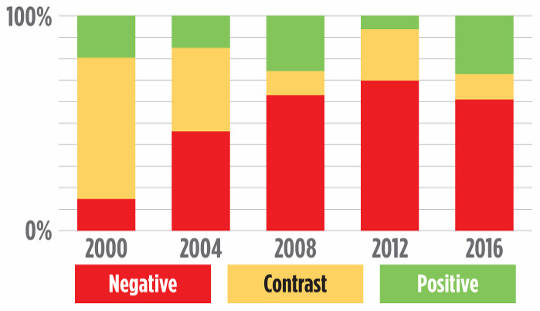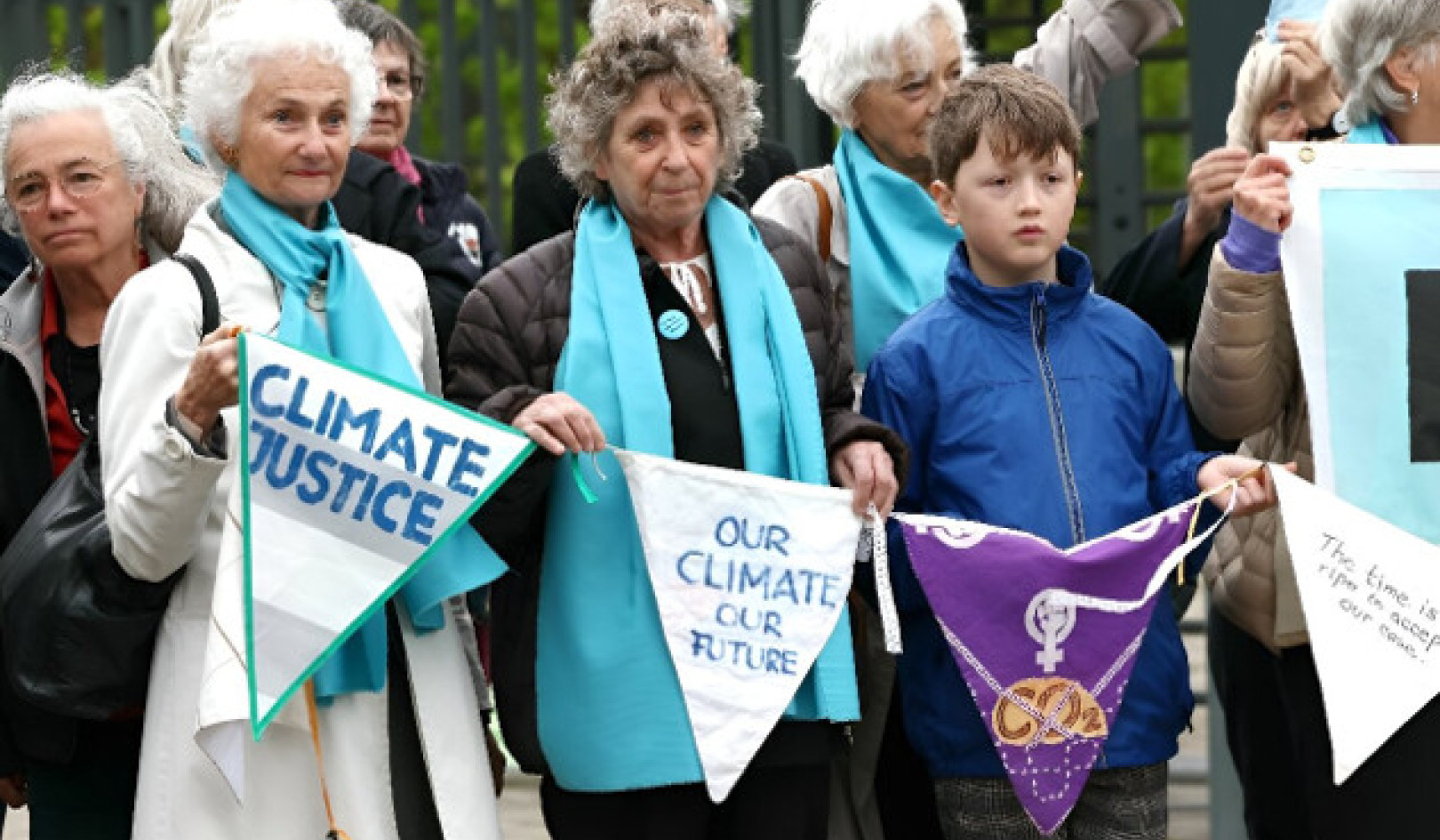 Chart based on data in Geer 2012 and Fowler and Ridout 2013.
Chart based on data in Geer 2012 and Fowler and Ridout 2013.
(Credit: U. Rochester)
It was a contentious campaign, with charges of sexual misconduct, corruption, and greed. One candidate was labeled a criminal, the other a coward. Personal attacks came on a daily basis.
The presidential election of 1800 was nasty, just like the United States’ current one. In the end, Thomas Jefferson defeated incumbent John Adams, and the two didn’t speak for years.
Sound familiar? It should, says Mitchell Lovett, associate professor of marketing at the University of Rochester. “Negative campaigning has been around as long as campaigning,” Lovett says. “It stays around because it works.”
Negative impressions
The closest elections are usually the most negative, Lovett says. People tend to remember negative traits more than positive ones.
“When you tell voters two positive traits about a candidate, they tend to average those out,” Lovett says. “But if you give them two negative traits, people add them together, and it makes a more lasting impression.”
Negative campaigns have been on the rise. In every presidential election cycle from 2000 to 2012, campaign advertising was for the most part more negative than in the previous one.
The 2012 clash between Barack Obama and Mitt Romney was the gold standard for negativity. In that race, almost 90 percent of ads were negative, meaning that the ad mentioned the candidate’s opponent. Between June 1 and Election Day, 64 percent of the ads aired were “purely negative,” meaning that only the opponent’s name was mentioned.
“The rise in negativity is probably correlated with changes in outside funding, though that is not yet clear,” Lovett says. There are likely several factors at work, including a general increase in spending and increasingly conflict-oriented media coverage.
Twitter vs. traditional ads
Perhaps surprisingly, while the 2016 presidential contest between Donald Trump and Hillary Clinton has been strikingly contentious, the campaigns have actually run fewer negative ads in the last month than their counterparts in the 2012 presidential race.
But that’s in large part because they’re only running about half the number of ads. Candidates are relying less on paid advertising, and more on social media, to get their messages out. Trump has nearly 13 million followers on Twitter, and Clinton has 10 million.
 Figures are from September 16 to October 13 for each cycle. Numbers include broadcast television, national network, and national cable. (Credit: Kantar Media/CMAG with analysis by the Wesleyan Media Project)
Figures are from September 16 to October 13 for each cycle. Numbers include broadcast television, national network, and national cable. (Credit: Kantar Media/CMAG with analysis by the Wesleyan Media Project)
“Trump especially has relied on social media and engagement with media outlets to get his message out there,” Lovett says. “My guess is traditional campaign managers would say he’s killing himself with this strategy. He says what he thinks. That’s both his appeal and his downside.”
Clinton has used Trump’s own words against him in television ads. “On the margin, I think they’re effective,” Lovett says. “A lot of what Clinton says about Trump is reinforced by his own statements.”
Clinton has “some weak spots,” he says, and those have “gotten play for people on the Republican side, too.”
No matter the content of an ad, repetition is key. “People often forget the source and after many repetitions, they may start to believe the message simply because they keep hearing it.”
{youtube}9Ye057m9ewY{/youtube}
Article Source: University of Rochester























